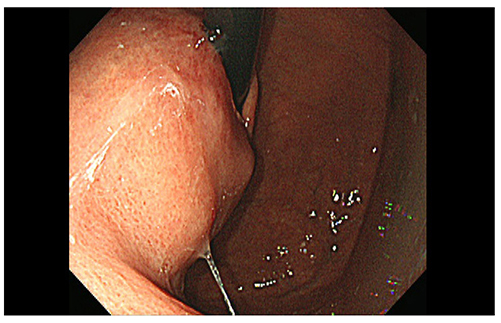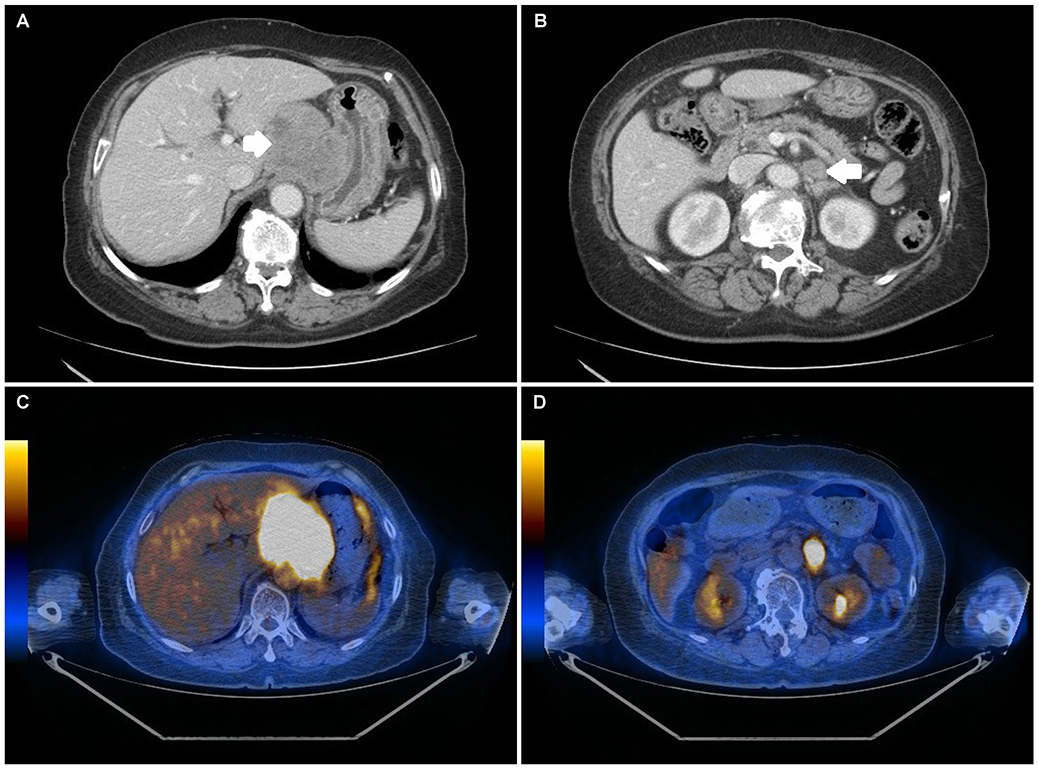Korean J Gastroenterol.
2019 Sep;74(3):183-186. 10.4166/kjg.2019.74.3.183.
Advanced Gastric Cancer Resembling Subepithelial Tumor
- Affiliations
-
- 1Department of Internal Medicine, Kangbuk Samsung Hospital, Sungkyunkwan University School of Medicine, Seoul, Korea. hyojoonyang@gmail.com
- 2Department of Pathology, Kangbuk Samsung Hospital, Sungkyunkwan University School of Medicine, Seoul, Korea.
- 3Department of Surgery, Kangbuk Samsung Hospital, Sungkyunkwan University School of Medicine, Seoul, Korea.
- KMID: 2458700
- DOI: http://doi.org/10.4166/kjg.2019.74.3.183
Abstract
- No abstract available.
MeSH Terms
Figure
Reference
-
1. Umehara Y, Kimura T, Okubo T, et al. Gastric carcinoma resembling submucosal tumor. Gastric Cancer. 1999; 2:191–193.
Article2. Kim HI, Shim KN, Yoon SY, et al. A case of early gastric adenocarcinoma resembling subepithelial tumor. Korean J Helicobacter Up Gastrointest Res. 2013; 13:60–63.
Article3. Ohara N, Tominaga O, Uchiyama M, Nakano H. A case of advanced gastric cancer resembling submucosal tumor of the stomach. Jpn J Clin Oncol. 1997; 27:423–426.
Article4. Standards of Practice Committee. Faulx AL, Kothari S, et al. The role of endoscopy in subepithelial lesions of the GI tract. Gastrointest Endosc. 2017; 85:1117–1132.
Article5. Fujiyoshi A, Kawamura M, Ishitsuka S. Gastric adenocarcinoma mimicking a submucosal tumor: case report. Gastrointest Endosc. 2003; 58:633–635.6. Yamane H, Ishida M, Banzai S, et al. Advanced gastric cancer with features of a submucosal tumor diagnosed by endoscopic ultrasound-guided fine needle aspiration and boring biopsy preoperatively: a case report and literature review. Int J Surg Case Rep. 2019; 55:223–226.
Article





